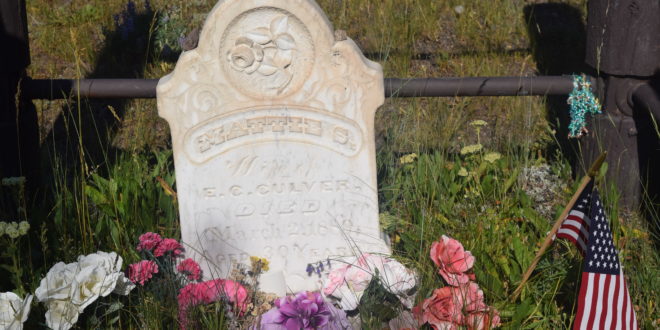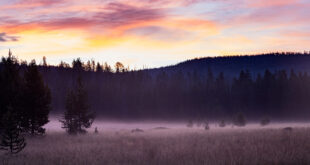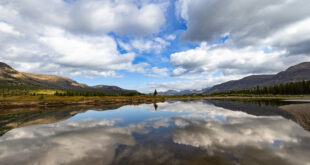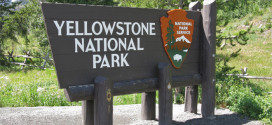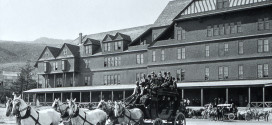There are a couple of graves in Yellowstone and a cemetery or two, but there’s one in a rather busy spot overlooking the Firehole River and a popular picnic area.
Just a short walk west from the picnic tables, lies the last resting spot of the mortal remains of Martha “Mattie” Shipley Culver, noted, on the headstone, as the wife of E. C. Culver.
Her headstone is simply carved white marble, and the grave is protected by a metal fence. According to the headstone, Mattie was 30 when she died on March 2, 1889, of tuberculosis.
Those who find the grave may not know much about Mattie, her life, or how she came to be buried there. And much of what we know about her is thanks to tireless research unearthed by Nan Weber, who wrote a book about her research and what she learned about her subject in her 1997 book Mattie: A Woman’s Journey West, published by Homestead Publishing of Moose, Wyoming.
Mattie was married to Ellery C. Culver, who had secured a job as a winterkeeper at a rough-and-tumble early hotel called Marshall’s Hotel, Weber wrote, named for its proprietor, George Marshall. Culver had come from Billings, where he and Mattie had met.
Mattie was the daughter of immigrants who had settled in the Lowell, Massachusetts area. The family was not well to do, and Mattie worked in the textile mills of the region when she was old enough to do so.
Ellery and Mattie had spent the summer of 1888 in Yellowstone.
In a letter Ellery wrote to the Billings newspaper, he described witnessing eruptions of Excelsior Geyser, according to Weber, located not too far away in Midway Geyser Basin.
Excelsior’s heyday was in the 1880s, author Lee Whittlesey wrote in his exhaustive Yellowstone Place Names. They geyser erupted regularly, often spewing columns of water into the area 300 feet high and 300 feet around, Whittlesey wrote. Ellery wrote of seeing columns of water 50 feet around.
Excelsior is believed to have blown out its underground “plumbing system” that creates the conditions for geysers to erupt. Today the geyser crater discharges water into the Firehole River, but no longer erupts.
Weber wrote that the family, which included an infant daughter named Theda, may have based their decision for Ellery to take the winterkeeper position partly for the sake of Mattie’s health. The hot spring environment may have been considered therapeutic for her TB.
Mattie was actually 32, not 30 when she succumbed to the disease, Weber wrote.
Rumors abounded about the circumstances of Mattie’s death: that she had died in childbirth, that her body had to be stored in two barrels until the ground thawed enough to bury her.
Mattie did not die in childbirth-and let’s think about this for a second. What woman would choose to be isolated and snowbound when it came time to deliver the baby?
And the ground was frozen hard and military men stationed nearby did come and help place Mattie’s body in two barrels placed end-to-end and covered with snow. But it was only a few days until they were able to carve a grave in the frozen ground.
Theda was placed under the care of Mattie’s sister and mother in Spokane, Washington, while Culver remained near Yellowstone in the Gardiner and Livingston, Montana area. He was able to visit his daughter frequently.
Theda died due to illness at the age of just 19. Culver passed away in a home for disabled veterans in Los Angeles in 1922, at the age of 73.
When I last visited Mattie’s grave on a recent Saturday in late July, previous visitors had left tiny stone cairns, artificial flowers and a bouquet of wildflowers, recently picked and already drying under the hot sun, adorned the site. A small American flag, no doubt placed around July 4, still stood.
I wondered about her life, so long ago and foreign to us now. Did she know she would be buried in so beautiful a spot? Did she ever imagine she’d be remembered by so many? So many people who don’t know her story, yet are touched enough in discovering her grave, leave flowers and stones in her memory.
Rest in peace, Mattie.
 Yellowstone Insider Your Complete Guide to America's First National Park
Yellowstone Insider Your Complete Guide to America's First National Park
